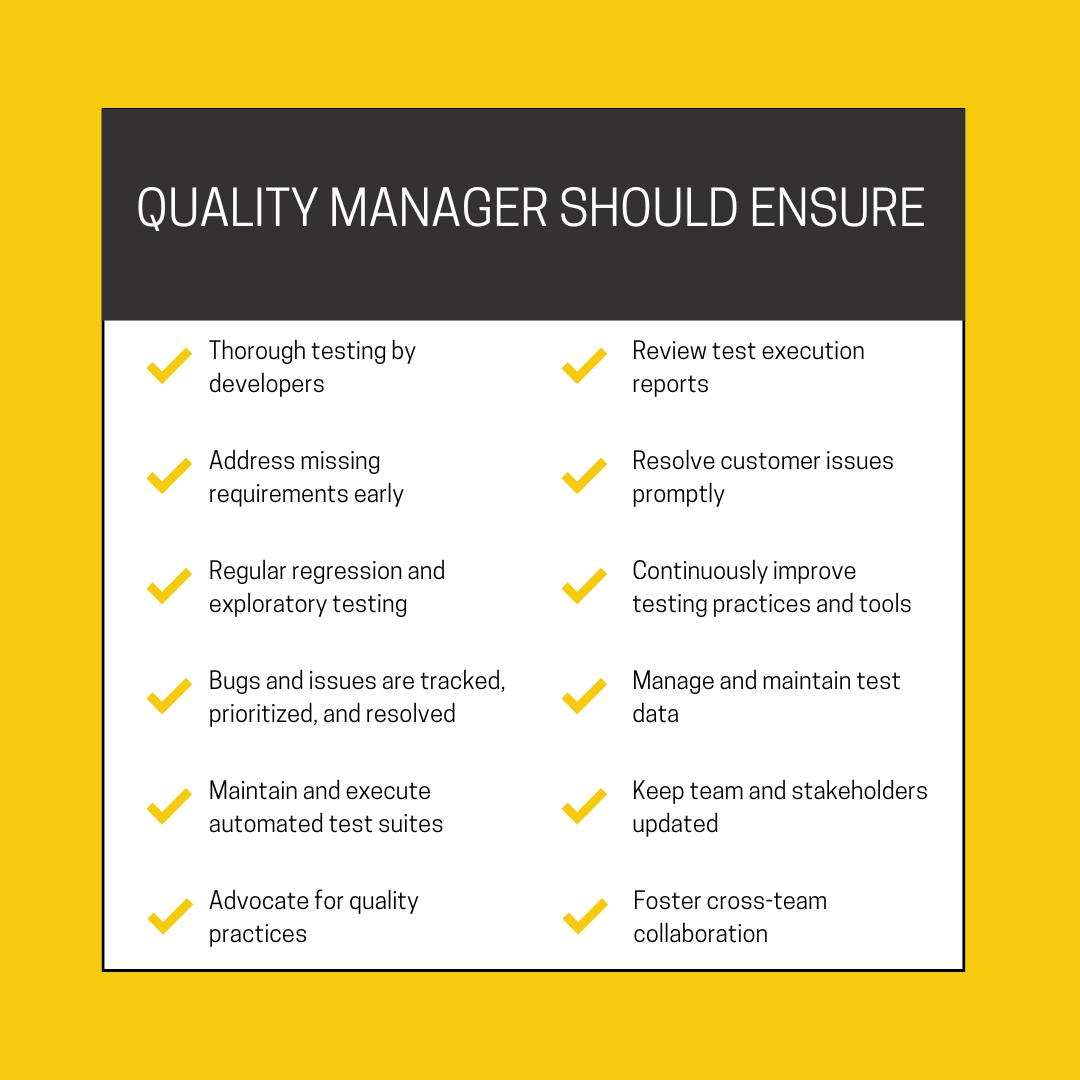At startups, we often hear that quality is a shared responsibility. While that's true, having the whole team own quality without clear leadership and accountability can lead to confusion. When everyone shares responsibility, no one takes full ownership, leading to unaddressed issues. Without someone to steer these efforts, you risk limited accountability, duplicated work, wasted resources, and critical gaps in product quality.
You could rely on your developers to write more tests or ask your PMs to step up, but ensuring quality usually demands a dedicated individual or team to guide the process. If you're lucky enough to have a PM or developer who understands how to bake quality into your product, that's great! But if not, you may start seeing recurring issues that could cost you valuable time, money, and customer trust.

To avoid these recurring issues, teams benefit from having a dedicated individual or team to take ownership of quality. At Qxf2, we believe testing is a cumulative responsibility. Here are some key responsibilities a Quality Manager should oversee to provide leadership and accountability in driving quality efforts
Developers take responsibility for thoroughly testing their tickets by writing and executing comprehensive unit and integration tests. These tests should be integrated into the continuous integration (CI) pipeline, ensuring that new features are tested before each build and deployment.
Collaborate with stakeholders to review requirements, ensuring all critical user needs and edge cases are considered. Facilitate team discussions to uncover and address any gaps early, preventing costly rework and minimizing risks during later stages of development.
Regression testing must be performed consistently to verify that existing functionality remains intact after code changes. Complement this with exploratory testing to uncover unexpected issues and enhance overall test coverage.
Establish a clear process for raising and tracking bugs. This includes resolving conflicts from new requirements and ensuring that each issue is appropriately prioritized and addressed promptly.
Automated test suites should be well-organized, up-to-date to provide comprehensive coverage of all critical areas of the application. Regular execution and active maintenance of these suites help identify potential issues early, ensuring a stable and reliable product before deployment.
Test execution results must be reviewed thoroughly to identify patterns, false negatives, and flaky tests. Continuously refine the results to ensure accuracy and reliability.
Customer-reported issues should be treated with urgency by replicating scenarios, identifying root causes, and delivering timely fixes to maintain user trust and satisfaction.
Regularly evaluate and refine testing practices, tools, and workflows to handle challenging scenarios effectively, enhance efficiency, reduce manual effort, and adapt to evolving needs. This ensures faster, more reliable results and aligns with the dynamic requirements of the product.
Test data should be properly configured and available as needed to support diverse test cases, including edge cases, integration tests, and automated test scripts. Synthetic data should be generated and maintained to meet specific testing requirements and ensure comprehensive coverage.
Provide regular updates on testing efforts, results, and deployment readiness. Use dashboards or concise reports to ensure alignment and keep everyone informed.
Encourage teams to integrate quality into their workflows, from development to deployment. Quality should be part of all key discussions, such as sprint planning, daily standups, and retrospectives, ensuring that testing and quality remain ingrained in the development process. Educate stakeholders and influence processes to prioritize quality, driving better products and customer satisfaction.
Facilitate open communication and collaboration across development, product, and operations teams to ensure alignment on quality goals and smooth execution of testing processes.
Note: While these responsibilities are typically handled by experienced testers, if you don't have an experienced Quality Manager or your team is struggling with quality, consider hiring an experienced tester. This can help ensure that your product meets high-quality standards without overburdening your team.
All of these activities take time, effort, and expertise. Startups thrive on speed and efficiency. However, with so much to juggle, do you still feel it's practical for the whole team to handle this responsibility? Or would having an experienced tester driving these efforts allow your team to build better products, faster?
At Qxf2, we offer tailored QA services designed specifically for startups with varied needs. From setting up testing frameworks to addressing quality gaps, we've helped numerous startups streamline their testing processes and deliver high-quality products. Just write to Arun ([email protected]) or drop a note to get more details.
© Qxf2 Services 2013 -